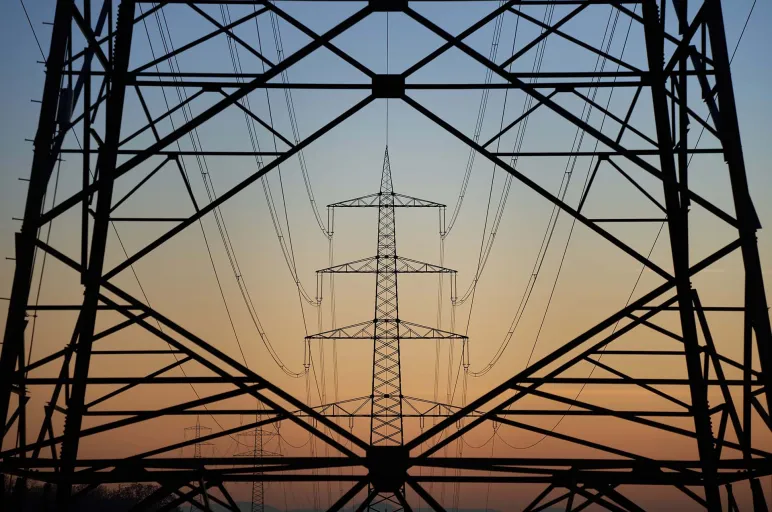
Why Resilient Power Grids Need a Mix of Solar, Nuclear & Batteries
- Energy demand will rise significantly, with solar expected to lead new electricity capacity additions.
- Building a resilient energy grid requires integrating renewables, nuclear power, and advanced storage solutions.
- Solar provides variability, nuclear ensures stability, and batteries smooth out energy supply fluctuations.
November 16, 2024 | Procurement Strategy 4 minutes read
By 2050, the world’s energy demands are expected to rise by a staggering 50%, driven by economic growth and increased urbanization.
Renewable energy sources, led by solar power, are projected to account for most of the global electricity capacity additions during this period.
Solar could be a major player in this global energy generation, but nuclear power remains a crucial player too. It currently contributes 10% of the world’s electricity supply with zero carbon emissions and its influence continues to grow.
In the face of such explosive growth, finding the right balance between variable solar power and stable nuclear energy is more critical than ever.
Building a Resilient Energy Grid
The demand for reliable, clean energy is growing. With climate change driving the urgency to reduce carbon emissions, the energy sector is facing immense pressure to transition towards greener sources.
But the real challenge isn't just about generating clean power—it's about building a resilient energy grid that can meet demand regardless of weather, time of day, or unexpected disruptions.
Resilience is the new buzzword in energy, and for good reason.
As power grids grow more complex and the risks from extreme weather events increase, ensuring a stable and continuous supply of energy is critical.
But how can we build this resilience?
By leveraging a balanced mix of renewable energy sources, stable baseload power and advanced energy storage solutions.
“When we talk about the future state, it’s not a conversation that needs to be either-or — I believe it’s both renewables and nuclear. Renewables provide variability, while nuclear ensures stability,” says Sangram Bhosale, chief supply chain officer at Xcel Energy.
Solar Or Nuclear to Power the Future?
Solar energy has become the poster child of the clean energy movement. Its rapid adoption is driven by decreasing costs and technological advancements, and projections suggest that by 2050, solar could dominate global electricity generation.
Solar is abundant, scalable and increasingly affordable, making it a key component of any renewable strategy.
"Solar technology is tested and proven. We’ve figured out how to balance the harmonics and reliably integrate solar energy into the grid,” says Pardeep Gill, vice president of supply chain and chief procurement officer at Ameren.
But solar has its limitations. Its dependence on sunlight means it can't always meet demand. This is where the need for complementary energy sources becomes apparent.
Nuclear energy has long been a staple of global energy systems, providing consistent, low-carbon electricity. It doesn’t depend on weather conditions, which makes it essential for maintaining grid stability. Nuclear plants operate around the clock, offering a reliable power source that balances out the variability of renewables like solar and wind.
"Nuclear is reliable; it has the lowest carbon footprint of all energy resources from a cradle-to-grave perspective. When you look at the total infrastructure cost, nuclear is among the lowest,” says Bhosale.
While nuclear energy's role is crucial, it faces hurdles such as regulatory challenges and high upfront costs.
However, without nuclear power, achieving a resilient grid that can weather fluctuations in renewable output would be incredibly difficult.
Batteries: The Key to Energy Storage
One of the most exciting advancements in the energy sector is the development of battery storage technology. Batteries can store excess energy produced by solar and other renewables during peak generation times, allowing that energy to be used later when demand is high, or renewable generation is low.
Gill is a strong advocate for battery technology. "I am a big believer that batteries are going to be our way to handle the peaks for energy and to make sure that there is no waste."
Batteries are essential for bridging the gap between renewable energy generation and consumption. They provide the flexibility needed to ensure that solar power can be relied upon even when the sun isn’t shining. As battery technology continues to evolve, costs are expected to fall, making large-scale energy storage a viable solution for enhancing grid resilience.
To build a resilient and sustainable energy future, we need an integrated approach that combines the strengths of solar, nuclear, and batteries. Solar will lead the charge in clean energy generation, while nuclear ensures a steady baseload that doesn’t fluctuate with the weather.
Meanwhile, batteries will play a critical role in smoothing out the peaks and valleys of energy supply, storing excess power when generation is high and releasing it when it’s needed most.
As Bhosale points out: "The future isn't about choosing between solar and nuclear — it's about integrating both."
Download the GEP bulletin – The Future Energy Debate: Solar Vs. Nuclear – What’s the Way Forward?
Learn more about our procurement and supply chain solutions for the energy and utilities industries




